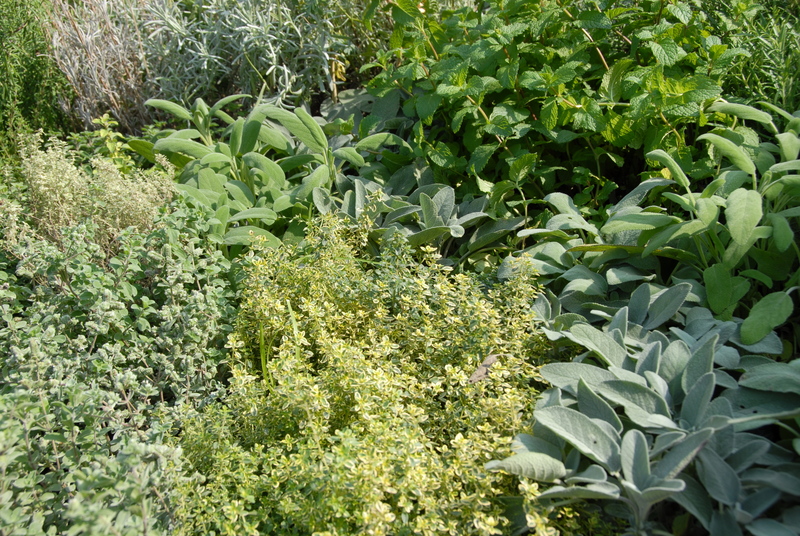Adapt Your Garden Design to Tackle High Winds
Posted on 09/09/2025
Adapt Your Garden Design to Tackle High Winds
Are fierce breezes making your gardening efforts feel like a losing battle? Windy climates present unique challenges, from snapped stems to battered shrubs and eroded soil. However, with strategic garden design choices, you can create an outdoor haven that not only survives but thrives despite high winds. In this comprehensive article, we'll explore practical, beautiful, and effective ways to adapt your garden to handle strong gusts--ensuring your plants, landscape, and overall garden aesthetic all flourish.
Understanding the Impact of High Winds on Your Garden
Before redesigning your garden to withstand strong winds, it's crucial to identify how wind affects different elements in your landscape. Wind can:
- Cause physical damage to plants, breaking branches and flattening flowers
- Increase water loss through transpiration, leaving foliage dry and stressed
- Cause soil erosion, washing away precious topsoil and mulch
- Carry salts and pollutants that can burn or weaken sensitive plants
- Disrupt pollinators and beneficial insects' activities
- Limit your plant selection, especially if you wish to grow taller or more tender varieties
Once you understand these challenges posed by wind in the garden, you can begin to implement solutions through smart garden design.

Assessing Your Garden's Wind Exposure
Every garden's wind exposure is unique. Determining the direction and intensity of prevailing winds will inform every step of your garden planning. Here's how to get started:
- Observe local patterns: Track wind direction and speed through different seasons. Note if certain areas are more exposed than others.
- Watch for microclimates: Buildings, fences, and natural contours can create sheltered spots or funnel the wind, increasing or reducing its impact.
Tip: Scatter lightweight sand or flour on a breezy day to observe how the wind moves through your space! - Check damage or dry patches: Plants showing windburn, bent trunks, or dry leaves can highlight problem zones that need specific attention.
Windbreaks: Your First Defense Against Harsh Winds
Windbreaks are essential for any garden enduring relentless winds. They act as a buffer, reducing wind speed, redirecting airflows, and creating sheltered microclimates for vulnerable plants. There are two major types:
Natural Windbreaks
These use living plants to slow and break up wind currents. Advantages include beauty, long-term effectiveness, and habitat for wildlife.
- Trees: Rows of hardy, wind-tolerant trees (such as pines, cedars, or hawthorns) make excellent tall windbreaks.
- Shrubs: Dense, multi-stemmed shrubs like Escallonia, oleaster, or photinia create thick barriers at lower heights.
- Hedges: Trimmed hedging plants--particularly evergreens like yew or privet—offer year-round protection and aesthetic appeal.
Artificial Windbreaks
Physical structures can be installed where natural options are slow-growing or impractical.
- Fences: Choose semi-permeable designs such as louvered panels, trellis, or woven fencing to prevent wind tunneling and turbulence.
- Walls: Sturdy stone or brick walls offer exceptional shelter. However, they can cause sudden wind drops and turbulence on the leeward side--so plant accordingly.
- Garden screens: Install materials like mesh, reed, or bamboo screening for an inexpensive and quick fix as vegetation establishes.
Expert Tip: Whether natural or artificial, windbreaks should be positioned perpendicular to prevailing winds for maximum effectiveness. For long borders, angle the ends outwards to funnel--rather than box in--wind currents.
Strategic Plant Selection for Wind-Resistant Gardens
A garden designed to withstand high winds requires careful plant choice and layout. Follow these guidelines for success:
Choose Wind-Tolerant Plants
- Evergreen conifers like pine, spruce, and juniper have flexible branches and dense foliage, making them ideal for windbreaks.
- Deciduous trees such as birch, hawthorn, and rowan are supple and less likely to snap.
- Tough, fibrous perennials such as ornamental grasses (Molinia, miscanthus) bend rather than break in strong winds.
- Heathland natives (heather, gorse, broom) are adapted to exposed environments and salt spray.
- Groundcovers like creeping thyme, sedum, or vinca can stabilize soil and reduce erosion.
- Sturdy coastal plants like sea holly, santolina, armeria, and lavender thrive in blustery conditions.
Look for plants described as wind hardy, salt tolerant, flexible, or deep-rooted in your local nursery's recommendations.
Layering and Plant Placement
- Layer plants by height: Start with tall windbreaks, step down to medium shrubs, then border with low perennials and groundcovers.
- Stagger groupings: Avoid planting in straight rows; group in clusters or zig-zags to help dissipate wind energy.
- Support tall plants: Use sturdy stakes or supports for young trees and tall perennials until well-established.
- Design dense beds: Crowding plants together reduces wind penetration and protects vulnerable species in the center.
Design Features to Reduce Wind Stress in the Garden
Complement your plant choices with key design elements to further defend your garden from high winds.
Wind-Resistant Hardscaping
- Permeable surfaces: Gravel paths, mulched areas, and open paving allow wind to move through, minimizing soil displacement.
- Raised beds: Lessen the effects of soil erosion and make it easier to employ temporary, targeted wind protection.
- Mulching: Applying a thick layer of organic mulch locks in soil moisture, reduces water loss, and guards against wind-driven erosion.
- Decorative screens and trellises: Install as partial wind baffles, perfect for growing climbers like honeysuckle or clematis.
Water Features and Rockeries
Ponds, streams, or well-placed boulders can disrupt and redirect wind flows, creating subtle wind shadows. Beyond their utility, they also enrich your garden's visual interest and microclimate.
Maintenance Tips for Wind-Prone Gardens
Design is just one step--regular maintenance is crucial for wind-tolerant gardens:
- Check support systems frequently: Secure stakes and ties to prevent damage in storms.
- Prune damaged growth: Promptly remove broken branches to reduce further wind resistance and disease entry.
- Top up mulch: Replace mulch washed or blown away to keep soil protected and retain moisture.
- Inspect and repair windbreaks: Weak points can undermine their effectiveness, so fix gaps in hedges or screens.
- Re-evaluate over time: As plants grow and conditions shift, tweak your layout to optimize both shelter and beauty.
Common Mistakes to Avoid When Adapting Gardens to High Winds
Avoid these pitfalls for the best success with wind-resistant garden design:
- Overly solid barriers: Solid walls and fences can cause wind tunnels or turbulence on the sheltered side. Use permeable rather than solid barriers for the best wind diffusion.
- Poor anchorage: Neglecting young tree and tall plant supports increases the risk of uprooting or wind rock.
- Ignoring microclimates: Failing to account for wind eddies caused by existing structures can leave plants unexpectedly exposed.
- Choosing inappropriate plants: Avoid plants with brittle stems, broad soft leaves, or shallow roots for exposed zones.
- Sparse planting: Large open spaces between plants allow wind to gain strength and velocity. Dense, layered planting is preferable.
Inspirational Themes for Wind-Adapted Garden Design
Adapting your garden for high winds doesn't mean sacrificing aesthetics. With careful planning, you can create stunning outdoor spaces, such as:
- Coastal-inspired gardens: Use pebbles, driftwood, ornamental grasses, and salt-tolerant blooms for a breezy seaside feel.
- Prairie-style landscapes: Embrace tall, flexible grasses, robust perennials, and undulating beds that sway gracefully in the wind.
- Native wildflower meadows: Select region-appropriate species with proven wind hardiness and minimal maintenance needs.
- Sheltered courtyards: Combine raised beds, screens, and climber-planted trellises to form inviting, wind-proof social spaces.
Be creative! Blending beauty and function is the true art of wind-resistant garden design.

Best Plants for Windy Gardens
To make your search easier, here's a selection of tough, wind-resilient species according to garden area:
- Tall Windbreak Trees: Scots pine (Pinus sylvestris), Monterey cypress (Cupressus macrocarpa), Silver birch (Betula pendula), Sycamore (Acer pseudoplatanus).
- Shrubs and Hedges: Elaeagnus (Elaeagnus ebbingei), Escallonia, Griselinia, Hawthorn (Crataegus), Olearia, Fuchsia magellanica.
- Perennials and Groundcovers: Russian sage (Perovskia atriplicifolia), Sedum, Sea thrift (Armeria maritima), Red hot poker (Kniphofia), Lamb's ear (Stachys byzantina).
- Climbers: Honeysuckle (Lonicera), Ivy (Hedera helix), Clematis montana (in sheltered corners).
- Ornamental Grasses: Stipa gigantea, Miscanthus, Molinia, Festuca, and Carex.
Talk to local nurseries or extension offices for more regionally adapted suggestions.
Conclusion: Embrace the Breeze, Don't Battle It!
Designing a garden to withstand and adapt to high winds lets you nurture a vibrant, healthy landscape even in the most exposed locations. Whether you install layered windbreaks, select flexible and wind-tolerant plants, or introduce permeable hardscaping, your options are many--and your rewards are great.
By blending practical planning with beautiful design, you'll not only protect your plants but also cultivate a unique and resilient outdoor retreat. Next time the wind howls, your garden will stand strong, waving gracefully—not struggling to stay upright. Start your wind-smart garden adaptation today and turn every blustery day into a showcase of nature, strength, and creativity!



